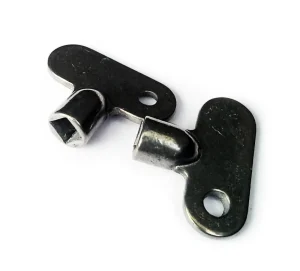15 August 2024
At PM247, we understand that maintaining a warm and comfortable home is a top priority, especially as the chilly British winter approaches. One of the most common issues homeowners face with their heating systems is radiators that aren’t heating up properly. More often than not, this is due to trapped air within the radiator, which prevents hot water from circulating effectively. This is where bleeding your radiators comes in—a simple yet essential task that can significantly improve your home’s heating efficiency.
In this guide, we’ll walk you through everything you need to know about bleeding a radiator, from the signs that indicate it’s time to bleed your radiators, to the tools you’ll need, and step-by-step instructions. We’ll also provide some handy tips to ensure the job is done correctly and safely. Whether you’re a seasoned DIY enthusiast or a complete novice, this guide is for you.

Bleeding a radiator involves releasing the trapped air inside your heating system. When air gets into the system, it rises to the top of the radiator, causing the top part to remain cold while the bottom heats up. This not only affects the efficiency of your heating system but can also lead to higher energy bills, as your boiler works harder to heat your home.
By bleeding your radiators, you allow the trapped air to escape, enabling hot water to fill the entire radiator. This ensures that your radiators can heat up fully and evenly, providing maximum warmth to your home.
There are several telltale signs that indicate your radiators may need bleeding:
If you notice any of these signs, it’s a good idea to bleed your radiators to restore their efficiency.
Need help bleeding your radiators? Contact PM247 now by clicking contact us or by calling this number: 08082 504 203
Bleeding a radiator is a straightforward task that requires minimal tools. Here’s what you’ll need:
Radiator Bleed Key: This small, square-shaped key is essential for opening the bleed valve. You can easily find one at any DIY store. Some modern radiators may also allow you to use a flathead screwdriver instead.
Old Towel: To catch any water that might drip out during the bleeding process and to protect your floor.
Jug or Small Container: This will be used to collect any water that escapes when the air is released.
Gloves: While not essential, wearing gloves can help protect your hands from any hot water that might escape.
Now that you’ve gathered your tools, let’s get started on bleeding your radiators. Follow these steps carefully to ensure the job is done properly.
Before you start, it’s crucial to turn off your central heating system. This allows the radiators to cool down, reducing the risk of burns and ensuring that air doesn’t continue to enter the system while you’re working.
The bleed valve is usually located at the top corner of the radiator. It’s a small valve with a square-shaped hole, where you’ll insert the radiator bleed key. If you’re unsure where to find it, consult your radiator’s manual or look online for guidance specific to your radiator model.
Position the old towel underneath the bleed valve to catch any drips. Hold the jug or container close to the valve to collect any water that escapes when you open the valve.

Radiator Bleed Key
Insert the radiator bleed key into the valve and slowly turn it anti-clockwise (to the left). As you turn the key, you should start to hear a hissing sound—this is the trapped air escaping. Continue to turn the key until water begins to come out, then quickly turn the key back clockwise (to the right) to close the valve.
Once you’ve bled one radiator, it’s a good idea to repeat the process on all the radiators in your home. Start with the radiators furthest away from your boiler and work your way towards it. This ensures that any air trapped in the system is thoroughly removed.
After bleeding all the radiators, turn your heating system back on and allow the radiators to warm up. Check each radiator to ensure they’re heating up evenly from top to bottom. If any radiators still have cold spots, you may need to bleed them again or check for other issues, such as sludge build-up.
To ensure the bleeding process goes smoothly, here are some additional tips from the experts at PM247:
While bleeding a radiator is a simple task that most homeowners can do themselves, there are times when it’s best to call in the experts. If you’re unsure about the process, or if you encounter any issues such as leaks or persistent cold spots, don’t hesitate to contact PM247 heating engineers. Our team of qualified heating engineers can diagnose and resolve any heating system problems, ensuring your home stays warm and cosy all winter long.
Bleeding your radiators is an essential maintenance task that can greatly improve the efficiency of your heating system. By following the steps outlined in this guide, you can ensure that your radiators are working at their best, keeping your home warm and your energy bills in check.
At PM247, we’re committed to helping homeowners maintain their properties with ease. If you have any questions about bleeding your radiators, or if you need professional assistance, don’t hesitate to reach out to us. With our expert guidance and support, you can enjoy a comfortable, well-heated home all year round.
Call us on 08082 504 203 or fill in the form here to get your heating system serviced by a skilled PM247 heating engineer.
Heating Services in your area: Bath, Bedfordshire, Berkshire, Bristol, Buckinghamshire, Essex, Gloucestershire, Hampshire, Hertfordshire, Kent, London, Oxfordshire, Surrey, Warwickshire and West Midlands